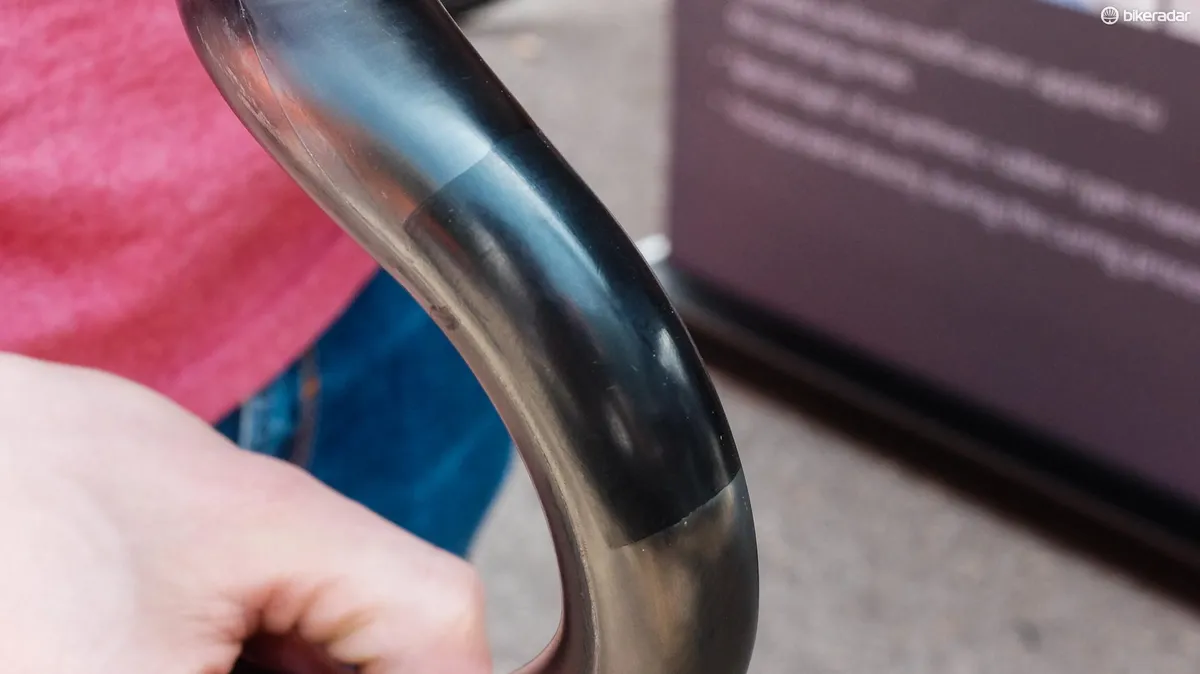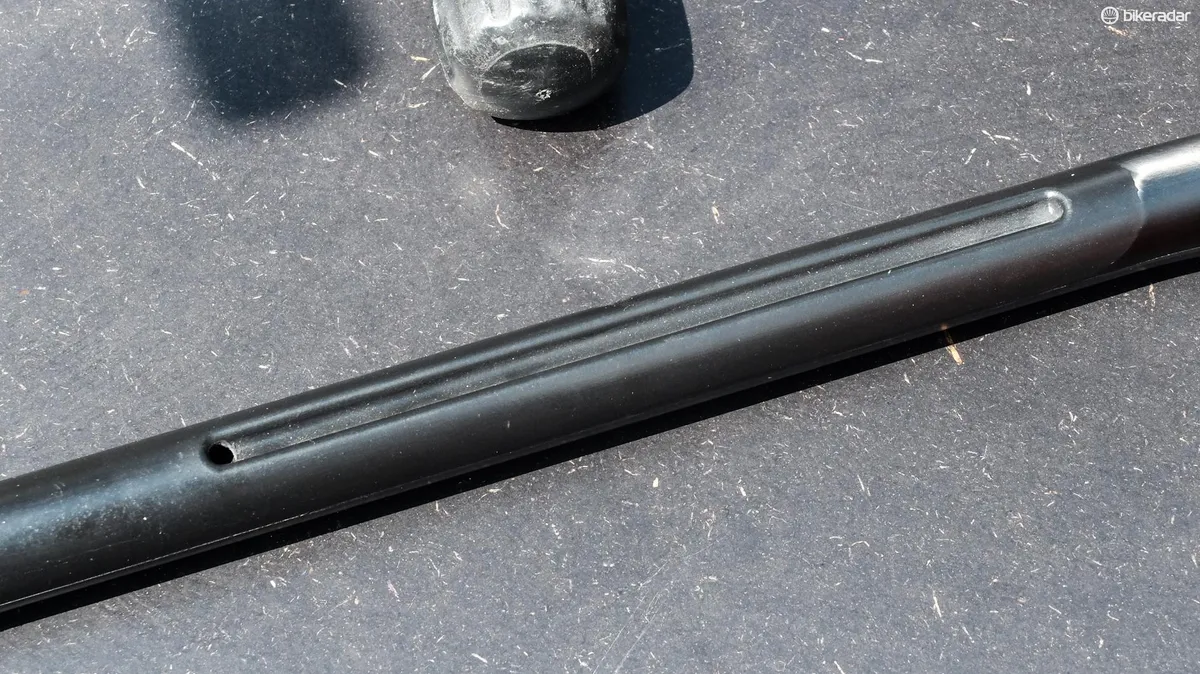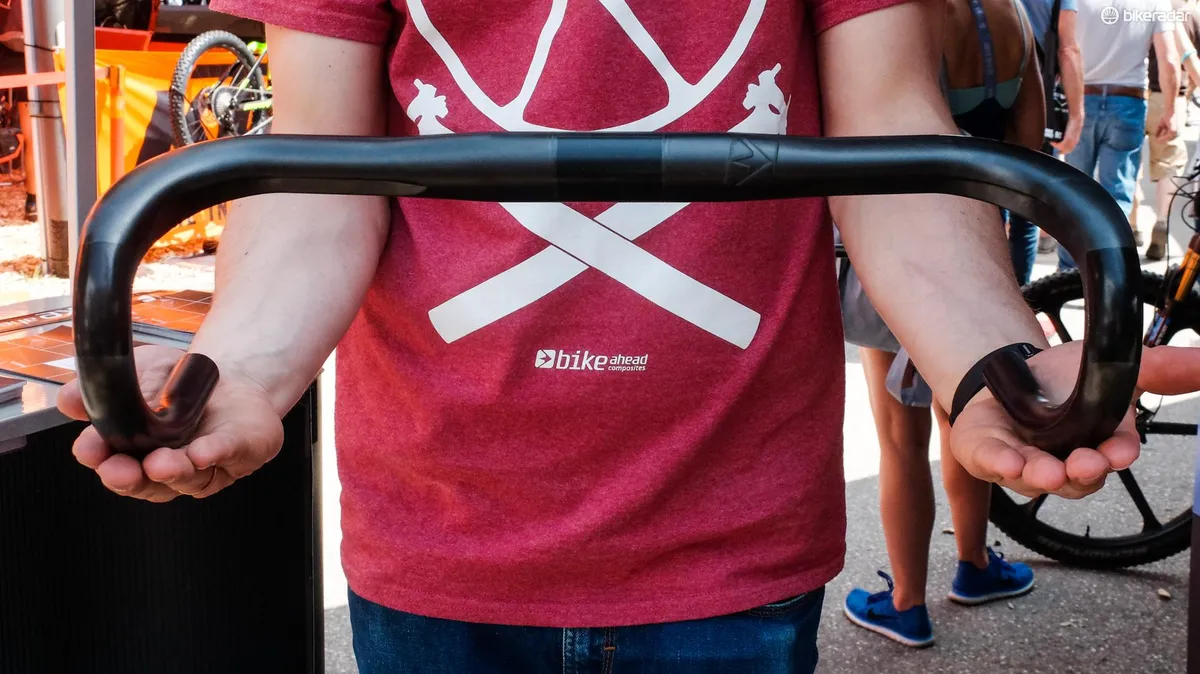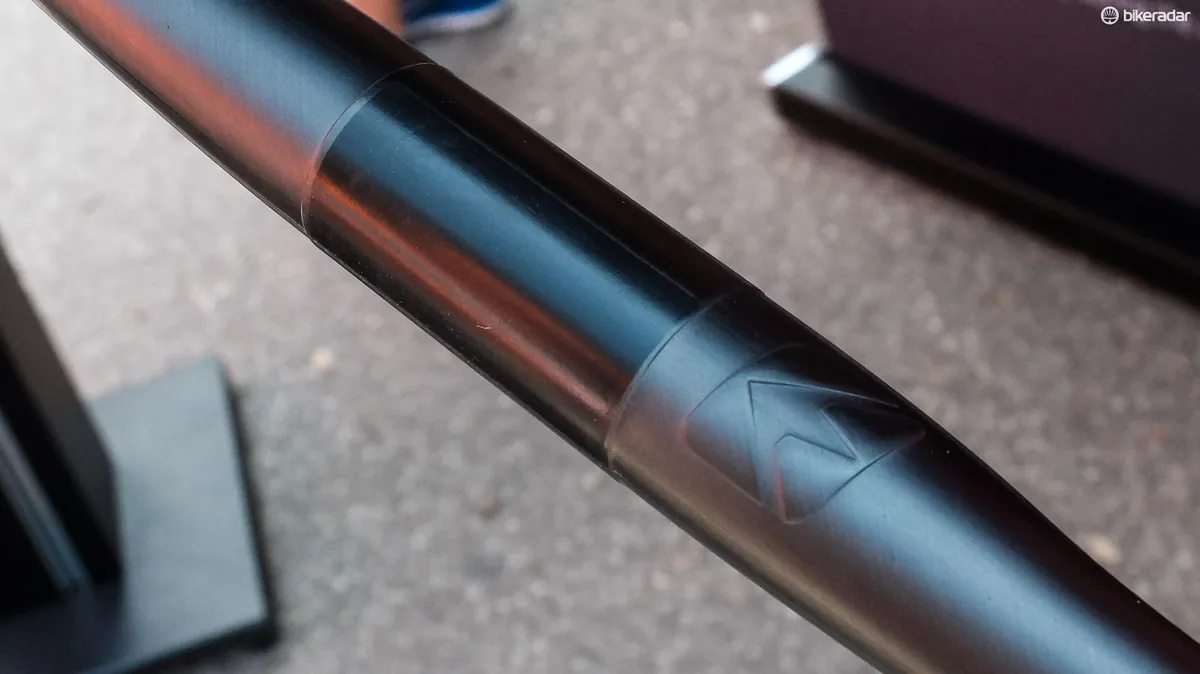Spotted at Riva bike Festival on the shores of Lake Garda, these handlebars and seatposts, from German carbon specialists Bike Ahead Composites, feature a synthetic rubber-like layer that is bonded onto their clamping surfaces. This layer is claimed to stop creaking and reduce required clamping forces.
Bike Ahead claims that by incorporating its No Slip Application (NSA) layer, clamping forces can be reduced by up to 60 percent, putting less stress on the structure of the carbon (a material that is notoriously not fond of being compressed).

The reduction of the required clamping force also makes using ultra-light stems, which often have cringe-inducingly low torque specs, much safer. The NSA layer negates the need to use carbon assembly paste.
Bike Ahead was keen to stress that the synthetic rubber layer is bonded to the carbon during the layup process and is not simply glued on.
Bike Ahead doesn’t currently produce its own stems, but grumblings from some members of staff on the stand suggest that they may be coming soon.
Bike Ahead holds the patent for this design, so you won’t be seeing this anywhere else.
We’re yet to use the seatposts or bars, but if this layer really does work, this is a delightfully simple solution to a problem that plagues a lot of carbon finishing kit.
Now, if Bike Ahead can only work out how to incorporate the NSA layer into creaky press-fit bottom brackets...
What products feature the NSA layer?

Bike Ahead produces a wide range of flat bars, from very XC-focussed to more enduro-friendly models.

A particular highlight of the XC range was this Di2 compatible bar, which features moulding and drilling to feed Di2 cables through the bars and into a compatible PRO stem. Nifty!

One fairly conventional drop bar is also available.
A range of seatposts of varying shapes and sizes that incorporate the rubber layer was also on show at the stand.


